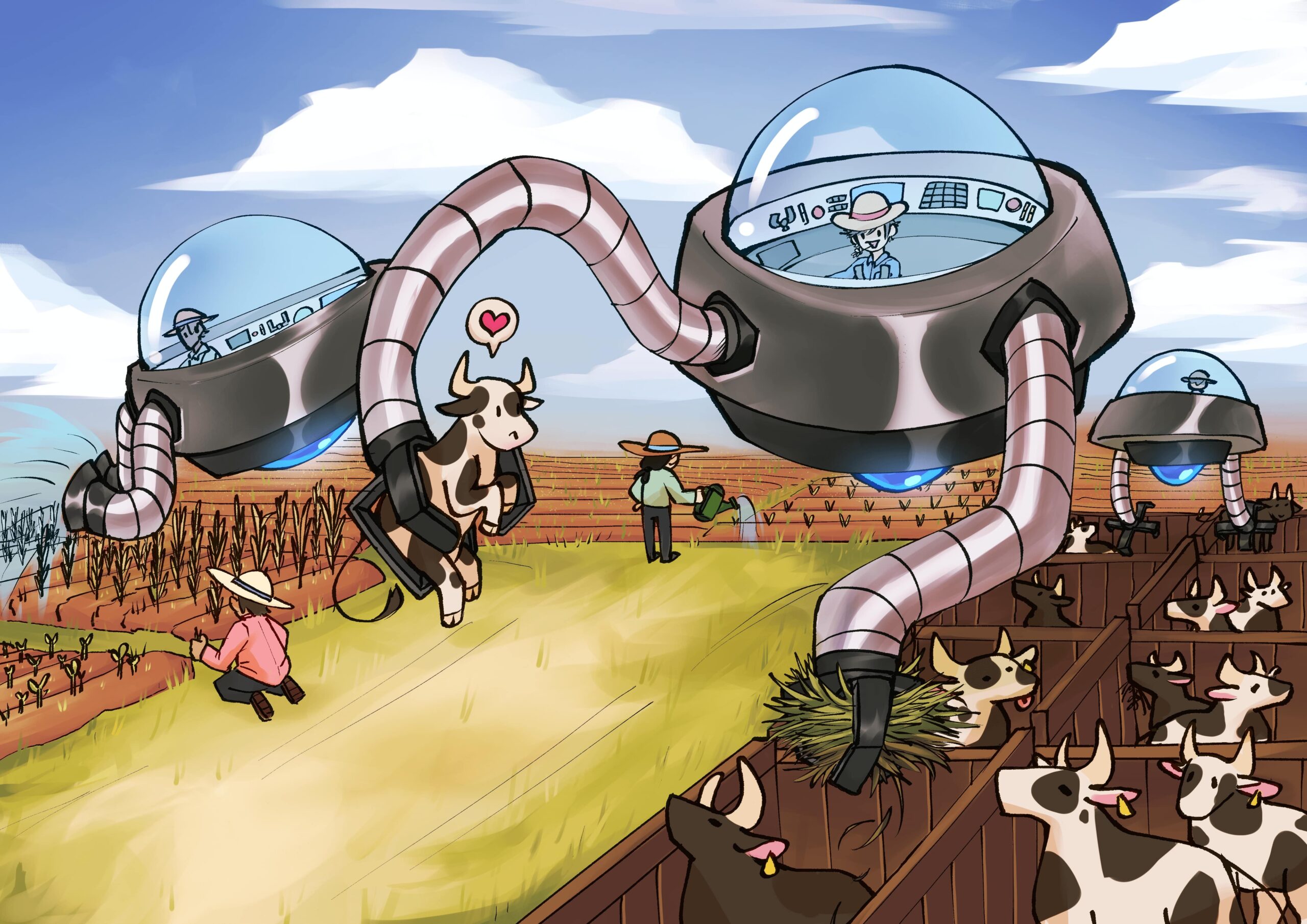by Ridzwan Razalee
An ax, shovels, hoes, and a high-performing computer are not tools that one would imagine being in the same category. But, think about the various elements to consider in farming, soil moisture, lighting, and weather conditions. All these things are aspects to consider and would need some calculated measurements in ensuring a successful harvest.
There is more data in farming than most people expect that would be useful to its process. Previously these data would be deemed to be too complex and vast to process.
Today, Machine Learning(ML) has found its way into agriculture for this very reason. Data processing and analysis. Machine Learning is a method of automated data analytics, a branch of AI that can learn from data, identify patterns and make decisions with minimal human intervention.
Considering the extensive work required in farming, an extra hand would come a long way. Cheap and widely available sensor technology that will help gather data and analyze a large volume of data around the farm is changing how farming operates. Now, even the small-owned farming business has the opportunity to benefit from such a technology.
It would cost an arm and a leg if farmers wanted access to data collected through remote sensors in the past. Data and images gathered and processed would require an aircraft with multi-spectrum cameras and expensive software to make sense of the data.
Today, machine learning is helping farmers solve some of the industry’s most pressing challenges at a lower cost. These challenges could slow down the process of growing more food. Global demands are also no longer for just more food but better food, with higher nutrition values. Farmers would be required to do things more efficiently while not comprising in quality to meet this demand.
By using even their smartphones, there are available products that could help farmers gather information around the farm that would take the guesswork out of farming. One example of this product is Microsoft’s Azure Farmbeats, which is constantly working to bring the cost down of data gathering on a farm.
Machine Learning now can be available in the whole growing and harvesting cycle, starting from the seed till the picking of the harvest.
Here are some ways Machine Learning can help with agriculture:
1) Weather Forecasting
The weather is a reality that every farmer would have to deal with, and many have wished they could control it.
A successful harvest relies on the weather just as much as other factors, and it gets difficult for farmers to predict the right time for sowing seeds. Planning a harvest cycle is of crucial importance, and using AI to predict the upcoming weather to make decisions as to the right time to sow the seeds can allow farmers to maximize their growth.
Analyzing and processing accurate weather information about every part of the field is one thing that machine learning has to offer.
2) Soil and crop monitoring
Soil management can get tricky, for it’s a natural resource with complex processes and vague mechanisms. Something as intricate as the temperature can set things off in a different direction.
ML is well equipped to study and analyze data such as temperature, moisture level, and chemical makeup of the soil. All of this can create an impact on crop growth and the well-being of livestock.
3) Disease and Weed detection.
Growing crops doesn’t always go according to plan. Diseases and unwanted weed species tend to make their way to the crops one is growing. ML-driven image processing can identify which plants are infested with diseases and even identify the weeds.
On top of detection, it may also provide a solution to the disease with a treatment plan catered to the specific infection. Avoiding a one size fits all solution that may cause other problems when you “fix” one. Spraying pesticides was a widely common practice when it comes to disease control. However, spraying pesticides in cropping areas would come at a high financial and environmental cost.
ML would seek to create a more precise crop management system, targeting only the infected places and plants.
4) Predictive analytics
Data on its own could mean very little to farmers, based on the earlier points, it is the processing and making sense of the data, which gives values to farmers.
Machine Learning has opened the doors for predictive analytics in agriculture. It encompasses a variety of statistical techniques from data mining, enabling prediction of future or unknown events by studying and analyzing current and past events on the farm.
This will provide farmers with proper guidance about water management, crop rotation, timely harvesting, type of crop to be grown, optimum planting, pest attacks, and nutrition management. All this will allow the farmers to make faster and better decisions based on facts provided by the AI.
5) Livestock management
Livestock production and animal welfare are factors to put into consideration in the new age of farming. Accurate and unbiased data and prediction in matters such as livestock production would be handy to farmers. For example, AI may help predict the future weights of the livestock 150 days before slaughter day. Farmers could use this information to modify diets and conditions to direct it to the desired weight of the livestock.
Animal welfare will play a vital role in the quality of the meat and other produce from the livestock. Ensuring that the animal’s health and living conditions are keeping them in a happy mood is now part of the farmer’s job to retain quality.
ML-based systems can be used to monitor early signs for diseases and trace various activities of the animals, and analyze how their living conditions could be improved.
Future of Machine Learning in Agriculture
It is safe to say that agricultural knowledge is the future every farmer should take more seriously, and they must embrace and understand how AI or Machine Learning could help them in their journey.
REKA is excited to see the future of where agricultural technologists would be the norm in the sector. Through our data digital visualization platform, we also seek to contribute our part in this growing movement.







